Table of Contents
Interoperability (IO) Specification Publication Model
The Interoperability Specification Publication Model describes the lifecycle of the interoperability specifications (e.g., PS-CA, CA:FeX). Specifications will be identified according to semantic versioning, using a three-part version number and release type tag (e.g., v0.1.0 DFT, v1.1.1 TI, etc.,). The tag will identify the Specification Publication Type (i.e., maturity level) as either Draft (DFT), Trial Implementation (TI) or Final (Final).
The following table provides a summary view of the IO Specification Publication Model. There are three Specification Publication Types: Draft, Trial Implementation and Final, which represent the level of maturity for the specification. Within each Specification Publication Type, there are two attributes that further define the maturity level: Implementation Readiness and Prototyping / Validation Readiness. Definitions for each Specification Publication Type and Attribute can be found in the sections below.
The IO Specification Publication Model may also be accessed in PDF format here.
Specification Publication Types | |||
|---|---|---|---|
| Publication Attributes | Draft | Trial Implementation | Final |
| Implementation Readiness | In Development | Limited Roll-Out | Production |
| Prototyping / Validation Readiness | Beta Testing / Beta Projectathon | Projectathon / Conformance | Connectathon / Certification |
IO Specification Publication Types
When this designation is assigned, the specification is currently in development and may be in the midst of an internal and/or public review periods (balloting cycles). These specifications will generally benefit from lessons learned through development and pilots.
When this designation is assigned, the specification is considered to be a draft for trial use / trial implementation in production systems. It has been cycled through public open review and comment dispositioning has been completed. In some cases, features and capabilities or known issues may be documented in the backlog for inclusion in a future trial implementation release.
When this designation is assigned, the specification is considered to have addressed all stakeholder comments received in reviews of prior releases. Projectathon testing has been successfully completed, with all known issues resolved. And, all documentation is complete, providing implementers the ability to use the specification for compliance and certification of their products. |
IO Specification Attribute Definitions
|
IO Specification Publication Versioning
The interoperability specifications will follow semantic versioning, using a three-part version number and release type tag (e.g., v0.1.0 DFT, v1.1.1 TI, etc.,).
Major:
Minor:
Patch:
Release Tag:
|
Balloting
Balloting is the formal process of sending a specification to a consensus body, collecting and addressing feedback and change requests prior to publication.
It is a methodology for taking a version of a specification, technical and business content, and bringing it to a body of interested individuals (working group participants, SDOs, etc) with the purpose of gathering consensus and collecting feedback from that body and working through how that feedback will be addressed in a formulated way for the purposes of feeding what goes into a published release.
The intent is to follow a consensus driven activity that utilizes and build on best practices used around the world. The goal is to gauge and drive decision making best practices.
The balloting process has seven stages:
The balloting process is composed of seven stages:
- Preparation for Ballot
- Consensus Group Formation
- Circulation of Content
- Ballot Period
- Disposition Period
- Reconciliation Period
- Final Results
The diagram below, Balloting Process: Stages, provides a visual of the seven stages with additional details within each stage.
Learn More About Balloting
An Introduction to Balloting Processes Community Education Session was held in November 2023 and was recorded. In this recorded session, you will learn more about the balloting process, its stages and how how various levels of balloting may impact the process.
The recorded session is available here. And the associated webinar deck is available below.

